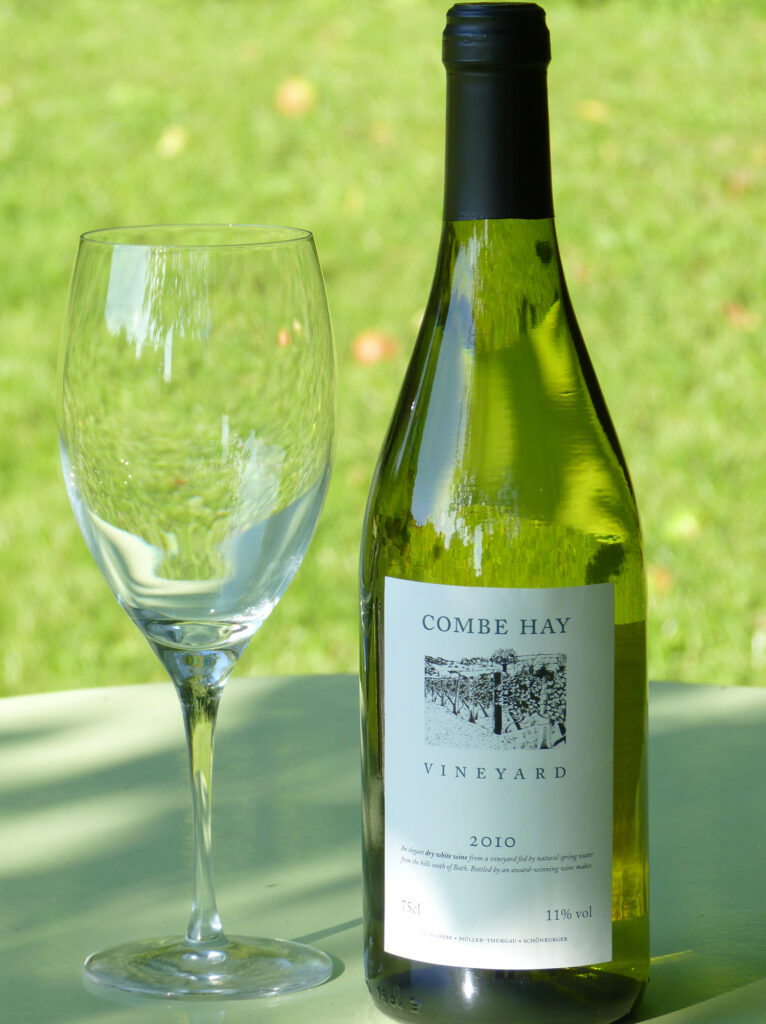Terroir & Varieties
Site, History & Grape Varieties
What makes our vineyard and wine so special really is all about where it is – the flavour of the grapes and wine is drawn from its surroundings – you are drinking a bit of the beautiful English countryside!
It’s situated on a gentle, south facing slope, sheltered by woodland, fed by spring water and surrounded by fields in an area of “Outstanding Natural Beauty” on the outskirts of Bath.
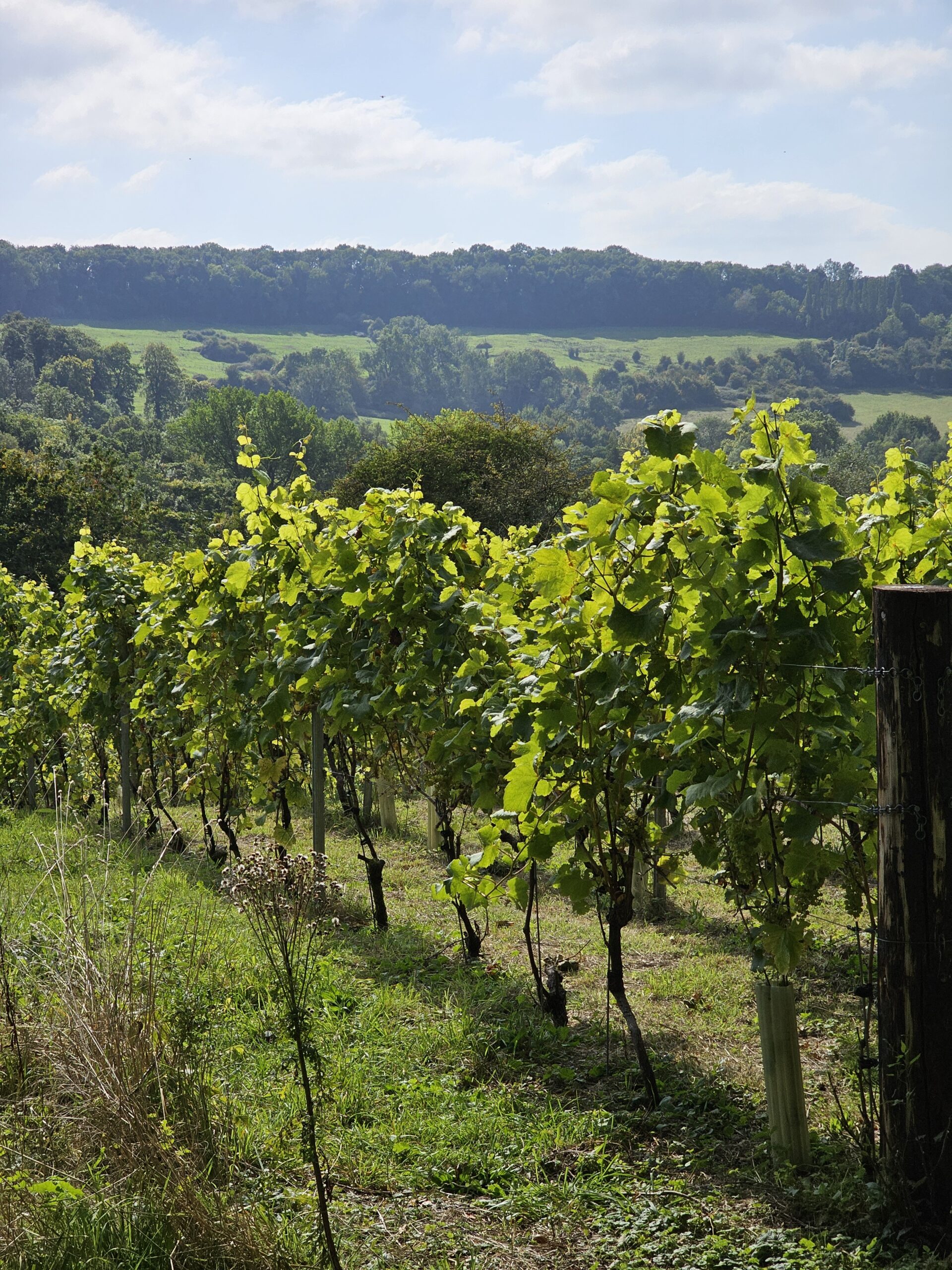
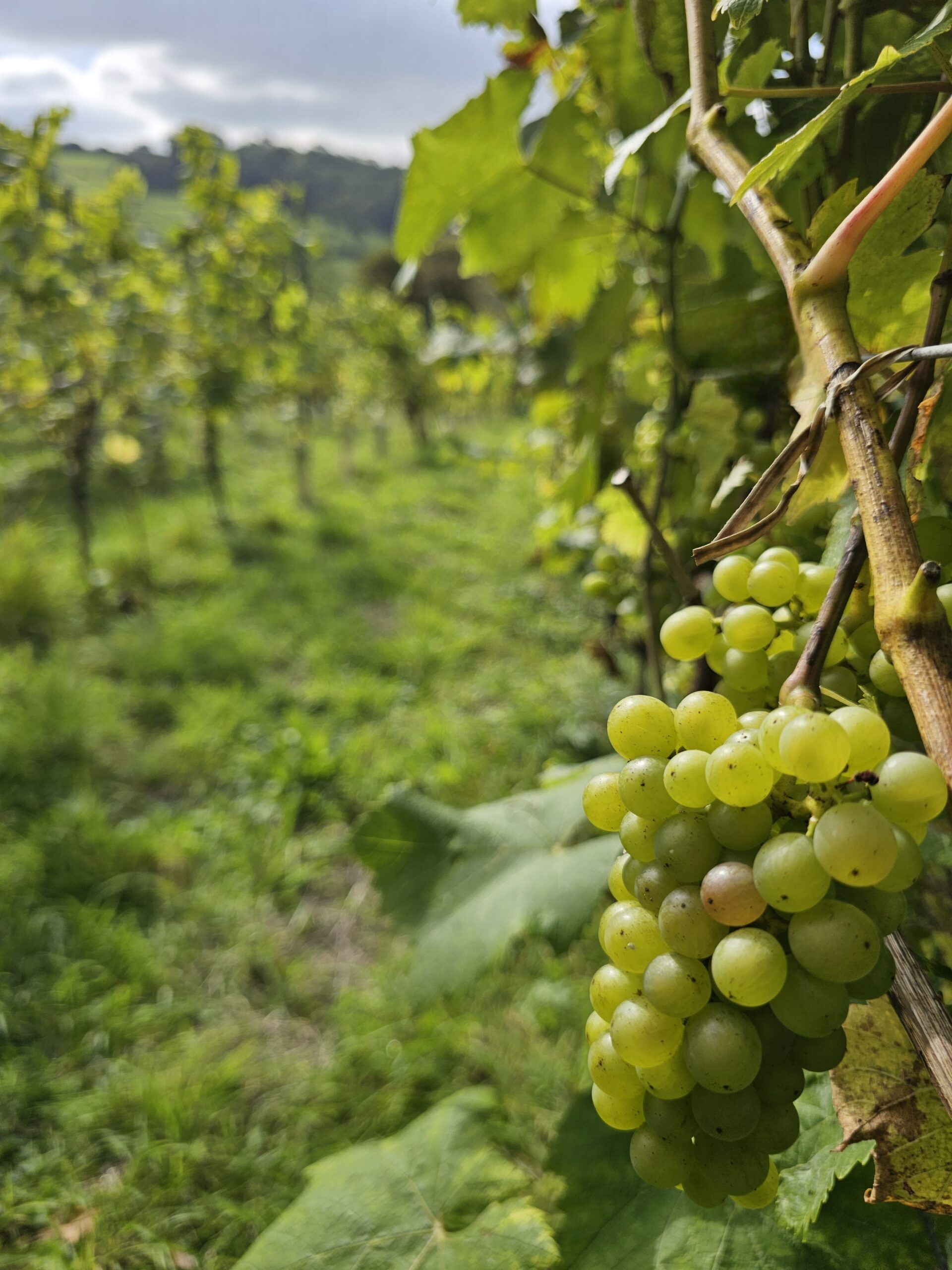
Heritage Grape Varieties
The three German vine varieties of –
Schönburger – whose grapes turn a pretty pink in a sunny year, add fruit and citrus flavours to the wine,
Müller-Thurgau – popular in Italy, adds clean mineral elements, and
Huxelrebe – which blends really well with the other two varieties to add smoothness on the palate and length,
All were chosen by my father, a wine merchant who, using his experience working in French and German vineyards and then the UK wine trade, wanted to make wine people really enjoyed drinking.
They are ‘Heritage’ varieties, as more recently it has been popular to cross vines and breed new varieties that might need less care and grow faster in different climates. Ours are traditional varieties chosen for their flavour.
Terroir & Biodiversity
The aspect, climate, soil and the whole ecological biosphere around the vines, are crucial considerations for a vineyard. This is what the French call “terroir”. Our vine varieties in particular draw flavours from these elements, producing grapes of different flavours on different sites.
Each plant and animal on the site contributes to it. A range of wild plants add different elements to the soil, increased when we mulch with organic matter and spray with small amounts of biodynamic treatments which encourage more interactions in the soil. The more diversity around the vines in the soil and atmosphere, the wider the range of potential nutrients, minerals and benefits, available to our vines naturally, not brought in or manufactured elsewhere. Find out more on our Environment page.
That is why Combe Hay will always be special, even a wine made from the same varieties will not be identical, as so much flavour comes from its surroundings, the countryside that is not only stunning but contains such a range of native biodiversity.
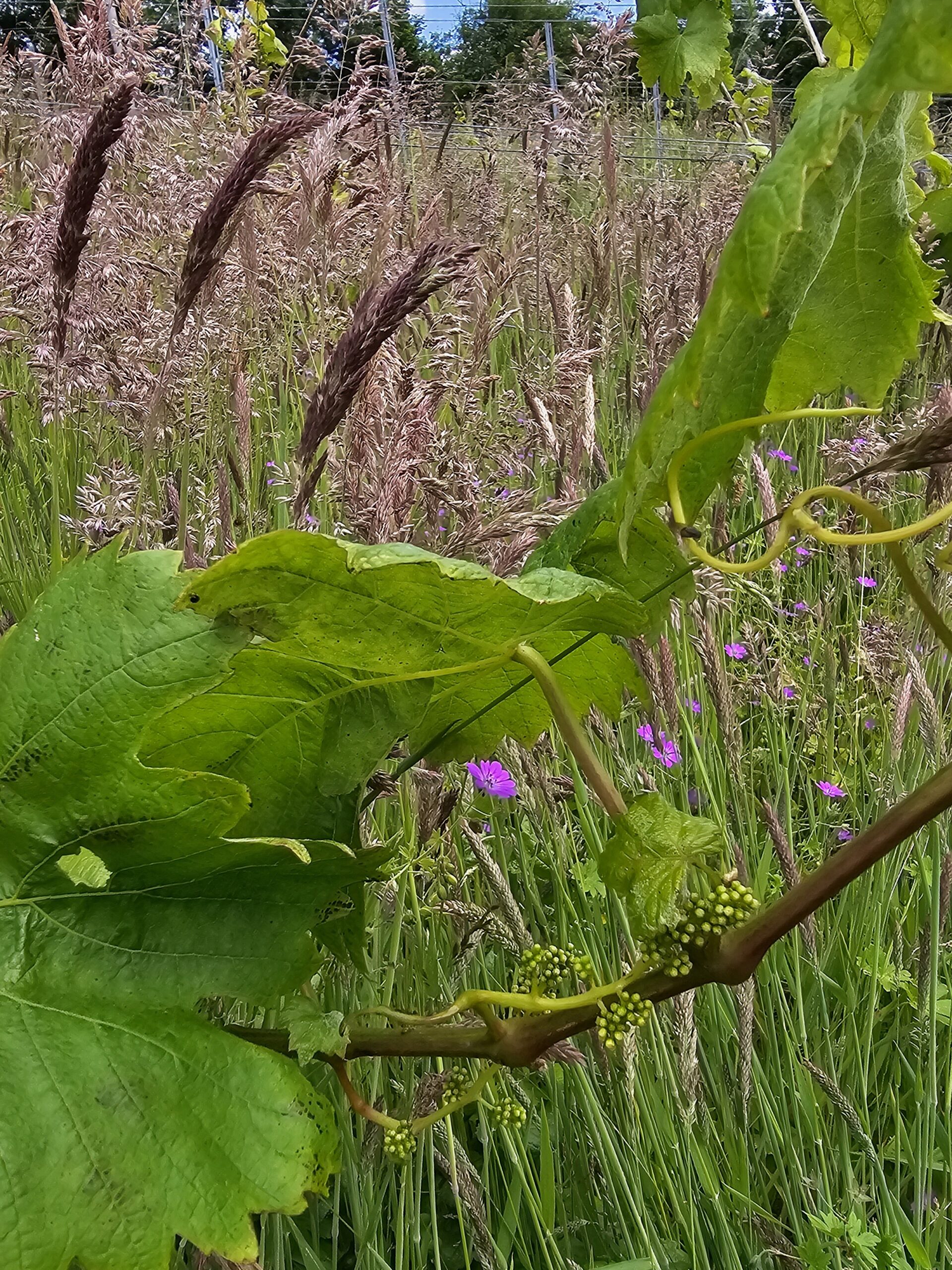
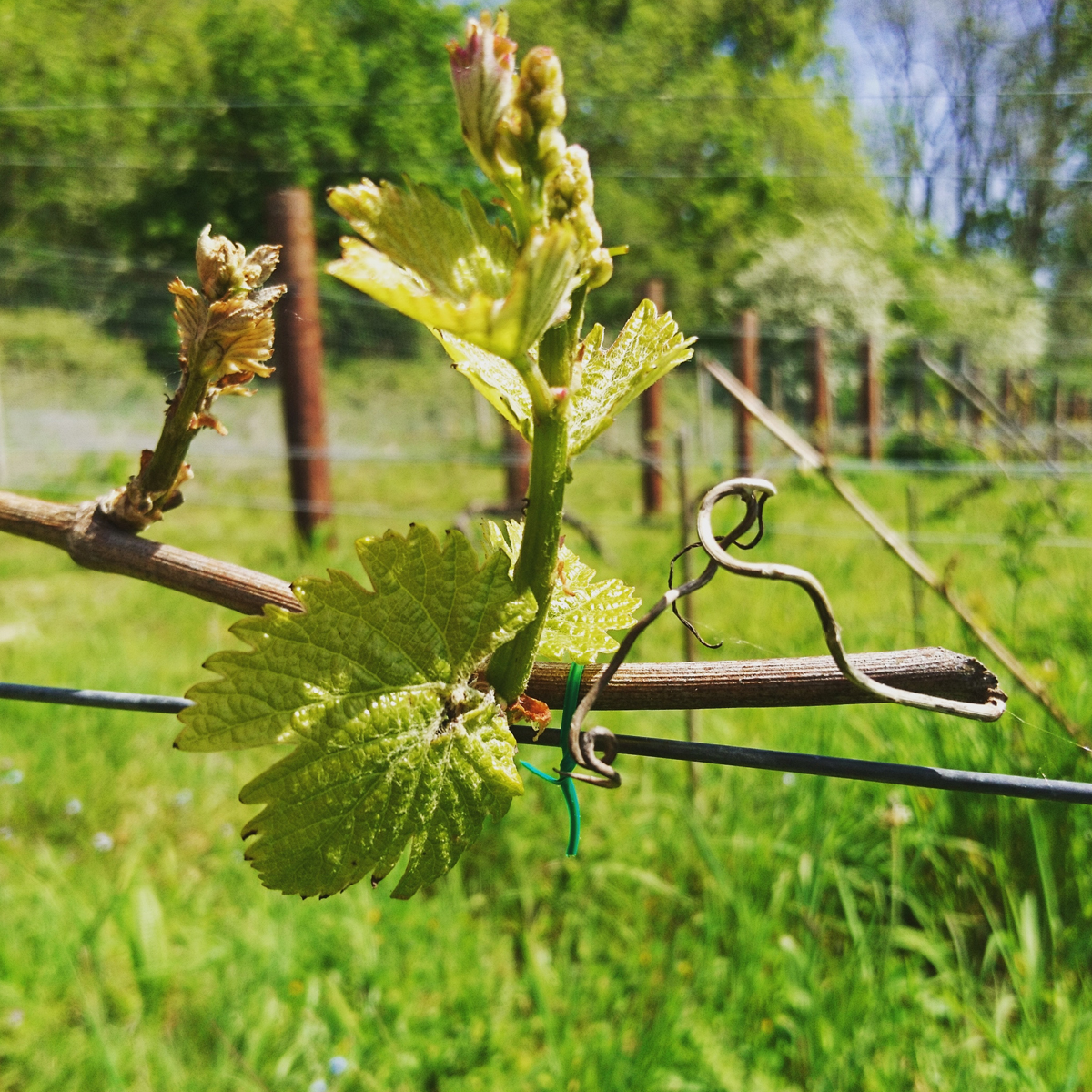
History
Planted in 1986, and always family run, its well established for an English Vineyard, as many have only been planted in the last few years. The vines have had time to reach their roots deep down and reflect more of the area they are grown in.
The area itself however also has an ancient tradition of wine making, with mentions in the Domesday book and sites where the Romans may have planted vines.
We are not the first to realise what a great place it is for a vineyard.
Dry White Wine – Description
We hope the description gives a helpful idea, but wine is a natural product, it changes slightly every year, please try it – you might taste something different, if so we would love to hear about it.
Nose – A elegant aromatic wine with a fresh, clean, zesty nose evoking floral; elderflower, apple blossom and heather notes, as well as a hint of the sweetness of ripe figs.
Taste – The palate is floral and fresh, with elements of fruit and mineral undertones from the Muller-Thurgau.
What’s it like? – The wine has Sauvignon Blanc characteristics; flowery and clean, but with more smooth fruitiness and without the gooseberry edge of a Sauvignon. The qualities of the grape varieties also lead to comparisons with a top quality Chennin Blanc.
We would love to know what you think, please email or contact us through Instagram.
Read reviews of the wine or contact us.
